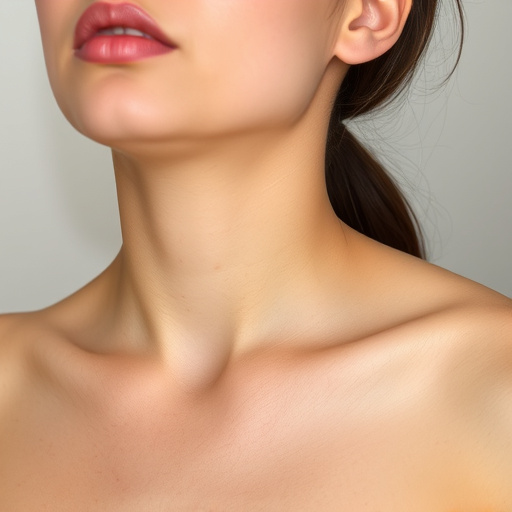Mastering Eyebrow Hair Removal: Fixing Over-Plucking Mistakes
Overplucking eyebrows during hair removal is a common but detrimental practice leading to sparse bro…….
Eyebrow hair removal, a specialized beauty and aesthetics procedure, has emerged as a significant trend in the global wellness industry. This practice involves the meticulous removal of unwanted eyebrow hairs to achieve a well-defined and symmetrical appearance. In recent years, its popularity has soared, capturing the attention of individuals seeking precision and aesthetic enhancement. This article aims to provide an in-depth exploration of eyebrow hair removal, covering various aspects from historical roots to technological innovations, market dynamics, and its global impact. By delving into these topics, we will offer readers a comprehensive understanding of this evolving field.
Eyebrow hair removal is a cosmetic procedure designed to shape and define eyebrows, enhancing facial aesthetics. It involves the permanent or semi-permanent reduction of unwanted hairs through various methods, ensuring a smooth, well-groomed appearance. Historically, eyebrow shaping has been practiced for centuries, with ancient civilizations like Egypt and Greece valuing aesthetic precision. However, modern techniques have evolved dramatically, incorporating advanced technologies and safety measures.
The core process includes several steps:
Consultation: A trained professional assesses the client’s eyebrows, considering shape, density, and desired outcome. This step is crucial for tailoring the treatment to individual needs.
Hair Removal Techniques: Various methods are employed, including threading, waxing, laser hair removal, and electrolysis. Each technique has its advantages, with laser and electrolysis offering longer-lasting results.
Aftercare and Maintenance: Proper aftercare is essential for optimal results and minimizing side effects. This includes keeping the treated area clean, using recommended skincare products, and following specific guidelines for touch-up sessions.
The influence of eyebrow hair removal extends far beyond individual beauty routines, shaping global trends and cultural norms. Here’s a glimpse into its worldwide impact:
| Region | Trends | Notable Practices |
|---|---|---|
| North America | Personalization is key, with individuals seeking unique, artistic eyebrow designs. | Microblading, a technique using fine strokes to mimic natural hairs, has gained immense popularity. |
| Europe | Focus on natural-looking results, emphasizing soft definitions and subtle improvements. | European technicians are known for their precision in achieving harmonious, symmetrical eyebrows. |
| Asia | Fast-growing market with a blend of traditional practices and modern innovations. | In countries like Japan, threading has been a popular method for centuries, now combined with advanced waxing techniques. |
| Latin America | Emphasis on bold, expressive eyebrows, often featuring dramatic arch shapes. | Brazilian wax is widely used, known for its effectiveness in removing fine hairs. |
These trends showcase the diverse nature of eyebrow hair removal, adapting to cultural preferences and individual expressions.
The economic landscape of eyebrow hair removal reveals a thriving industry with significant market potential. According to a 2022 report by Market Research Future (MRFR), the global aesthetic services market is projected to reach USD 138.7 billion by 2027, with eyebrow treatments contributing substantially. Key factors driving this growth include:
Increasing Disparity in Personal Care: Modern lifestyles and heightened self-care awareness have led to a rise in demand for aesthetically pleasing features.
Technological Advancements: Innovations in hair removal technology have made procedures safer, more efficient, and accessible.
Social Media Influence: Influencers and beauty bloggers promote various eyebrow treatments, influencing consumer choices.
Rising Disposable Income: Growing middle-class populations worldwide are willing to invest in personal aesthetics.
Technology has played a pivotal role in transforming eyebrow hair removal, enhancing precision, safety, and customer satisfaction. Here’s an overview of some significant developments:
Laser Hair Removal: This technique uses light energy to target hair follicles, offering long-lasting results. Modern lasers are more precise, reducing side effects.
Microblading: An advanced form of tattooing that creates natural-looking eyebrow strokes. It has gained immense popularity due to its ability to restore or enhance eyebrows.
Intense Pulsed Light (IPL): IPL devices emit light pulses that target melanin in hair follicles, making them vulnerable. This method is effective for treating lighter hairs.
Smart Skincare Devices: The introduction of at-home skincare tools has made eyebrow care more accessible. These devices offer guidance and support between professional treatments.
The beauty industry, including eyebrow hair removal, falls under stringent regulatory frameworks to protect consumers and ensure ethical practices. Key policies and regulations include:
Cosmetic Product Regulations: In many countries, cosmetic products, including skincare and hair removal creams, must undergo safety testing and adhere to quality standards.
Licensing and Certification: Professional technicians and clinics are often required to obtain licenses and certifications, ensuring competent practice.
Informed Consent: Customers must provide informed consent before undergoing any procedure, understanding potential risks and benefits.
Data Privacy: With the rise of digital beauty services, data protection regulations ensure client information is securely handled.
Despite its popularity, eyebrow hair removal faces several challenges and criticisms that require attention:
Skin Irritation and Allergies: Some methods, especially waxes and creams, can cause skin irritation or allergic reactions in sensitive individuals.
Uneven Results: Achieving consistently natural-looking results can be challenging, particularly with less experienced technicians.
High Costs: Advanced procedures like laser treatments may involve significant upfront costs, limiting accessibility for some.
To address these issues, ongoing training for professionals, product development focusing on sensitivity, and affordable pricing strategies are essential steps.
Case Study 1: Microblading Mastery in Los Angeles
Los Angeles-based artist Emily Chen has mastered the art of microblading, gaining international recognition for her exquisite eyebrow designs. Her studio offers personalized treatments, catering to a diverse client base. Chen emphasizes the importance of understanding clients’ preferences and facial structures to create harmonious, natural-looking brows. This case study exemplifies how technological advancements and artistic skill combine to deliver exceptional results.
Case Study 2: Community-Focused Beauty Services in Africa
In Kenya, a group of young entrepreneurs launched “Beauty Beyond Borders,” a social enterprise offering affordable eyebrow shaping services in underserved communities. They address cultural barriers and lack of access by providing educational workshops and training local women as technicians. This initiative not only empowers individuals but also promotes cultural exchange through beauty.
The future of eyebrow hair removal looks promising, with several growth areas and emerging trends on the horizon:
Customized Treatments: Advanced technology will enable highly personalized treatments, considering genetics, skin tone, and individual preferences.
Natural Hair Removal Products: The market for natural, plant-based hair removal solutions is expected to grow, catering to environmentally conscious consumers.
Digital Consultation Tools: Virtual consultation platforms will revolutionize pre-treatment planning, allowing customers to visualize results and receive expert advice remotely.
Integration of AI: Artificial intelligence can analyze facial structures and suggest optimal eyebrow shapes, enhancing the overall customer experience.
Eyebrow hair removal has emerged as a dynamic and influential segment within the global beauty industry, offering individuals a means to enhance their natural features. This comprehensive analysis highlights its historical roots, global impact, economic significance, technological advancements, regulatory considerations, and challenges. By embracing emerging trends and addressing criticisms, the field is poised for continued growth and innovation.
As the demand for personalized aesthetics continues to rise, eyebrow hair removal will remain a sought-after service, empowering individuals to embrace their unique beauty with confidence.
Q: Is eyebrow hair removal painful?
A: The level of pain varies from person to person. Some methods, like waxing, may cause temporary discomfort, while laser treatments are often tolerable with minimal pain. Modern techniques and topical anesthetics help minimize any discomfort.
Q: How long do the results last?
A: Results depend on the chosen method. Waxing can last for several weeks, whereas laser hair removal offers permanent reduction, with touch-up sessions needed occasionally.
Q: Are there any side effects?
A: Side effects are generally mild and temporary. They may include redness, swelling, or skin irritation. Proper aftercare is crucial to minimize these issues.
Q: Can anyone get eyebrow hair removal treatment?
A: Most individuals can undergo these procedures, but medical conditions like active acne or certain skin disorders may require consultation before treatment.
Q: How much does it cost?
A: Costs vary widely based on the method and location. Waxing is relatively affordable, while laser treatments are more expensive but offer long-term savings.

Overplucking eyebrows during hair removal is a common but detrimental practice leading to sparse bro…….

Eyebrow hair removal for men is a growing trend, offering various techniques like threading, waxing,…….